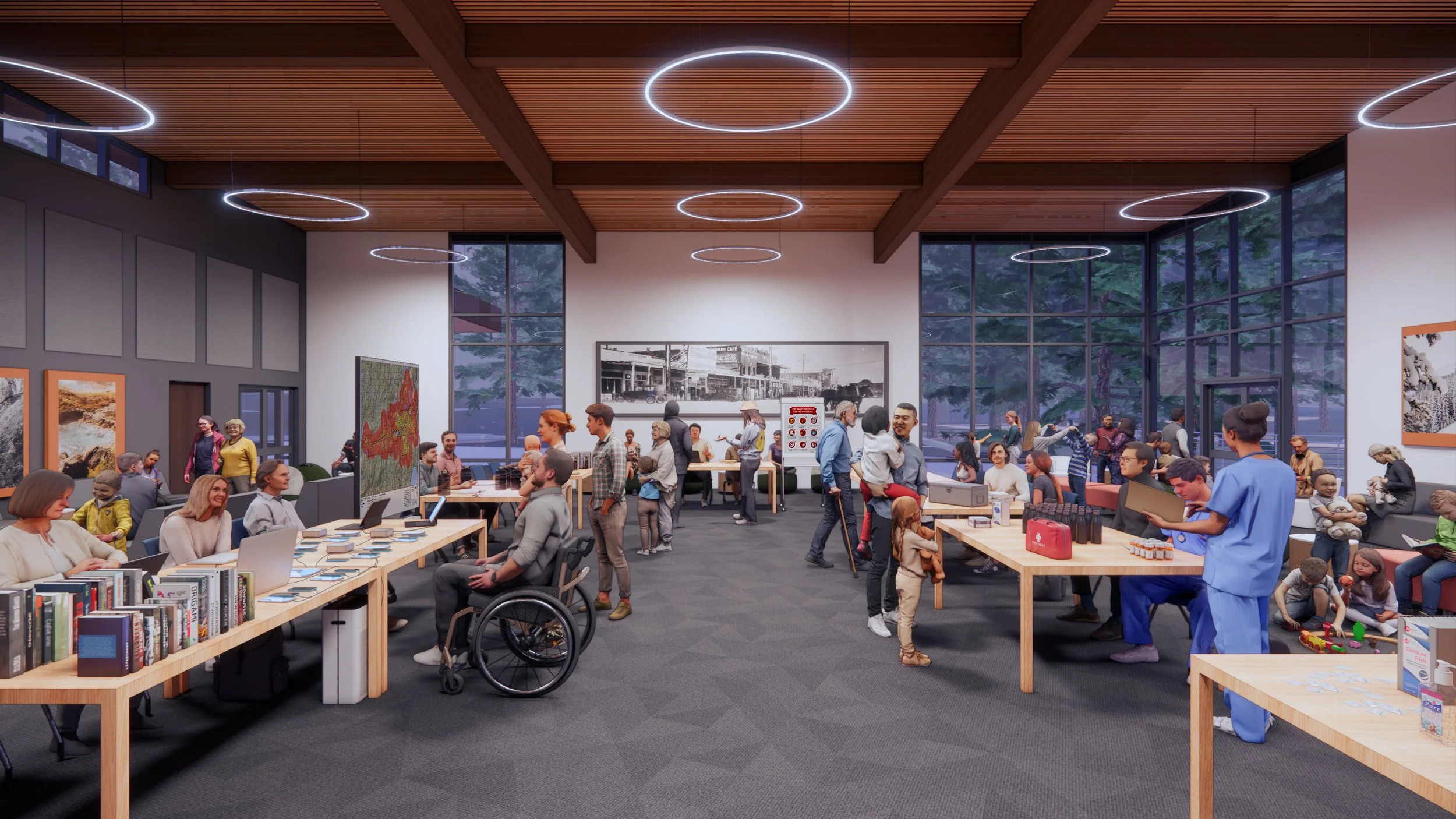
Frequently Asked
finance Questions
Here are some frequently asked questions specific to finance. Click here for a more general set of frequently asked questions.
Overview of cost and bond:
The new Truckee Regional Library will be funded in part by a local bond which will raise between $16.5 - $19 million, which covers over 40% of the project’s estimated $38 million all-in cost (construction, infrastructure, furniture, and fixtures). The total cost already includes significant contingencies to protect against inflation and market shifts. Additional funding sources include $10 million in private donations and $10–12 million in grants and foundation support. Taxpayers will never pay more than 3 cents per building square foot. Under today’s interest rates, that rate supports about $19 million in bonds. While the measure for the proposed bond is legally written as “up to $25 million,” the $25 million is simply a ceiling — the actual bond size is determined by the interest rate at the time the bonds are issued.
In plain English — what does this mean for taxpayers?
You will pay no more than 3 cents per building square foot. The rate can NEVER increase.
The bond will likely be around $16.5- $19 million, not $25 million.
The $25 million figure is simply a legal maximum, set high to ensure the project can adapt to changes without requiring another vote.
What is the total cost of the new library project?
The current project estimate is $38 million. This includes:
Library construction and site work: $30 million
Contingencies, fees, furniture and fixtures: $8-10 million
This estimate already includes significant contingencies to account for inflation and market changes. It is intentionally conservative so the community is well-prepared. Final costs will be confirmed through the competitive bidding process.
How will the project be funded?
The funding plan is designed to be balanced and achievable:
Measure G: About $16.5 - $19 million
(based on market conditions, funded at a maximum 3 cents per square foot rate)
Private donations: $10 million
Grants and foundation support: $10–12 million
Together, these sources cover the full $38 million all-in budget, including contingencies.
Why does the measure authorize up to $25M
if the expected bond is about $16.5- 19M?
Taxpayers are legally capped at 3 cents per building square foot. At today’s market conditions, that fixed rate would support about $16.5 - $19 million. If interest rates drop, the same 3-cent rate could support a somewhat larger bond, but never more than $25 million. In plain terms: the $25 million is a ceiling, not the expected amount — and taxpayers cannot be charged more than the 3-cent rate.
How much debt will be incurred?
Some opponents have claimed that Measure G would “incur $25 million in debt plus millions more in interest.” That is misleading. Taxpayers are strictly limited to 3 cents per square foot, no more. At today’s rates, that equates to about $19 million in bonds. Interest costs are already included within the 3-cent cap — similar to a fixed mortgage payment. Taxpayers will never pay above that maximum rate, regardless of how interest rates move.
Is the noted project cost final?
Not yet. These are developed estimates based on the current design phase, and they already include significant cost contingencies. The project team is still refining design choices, materials, and systems to find opportunities to reduce cost. Final costs will be locked in during the competitive bidding process.
What happens if the cost of construction goes up?
The project includes significant contingencies to cover potential cost increases. The team is also refining designs and materials to manage and reduce costs. Even if the project ends up more expensive than expected, taxpayers are protected — the bond rate can never go above 3 cents per building square foot, so no one will pay more than the planned maximum.
What happens if private donations
or grants aren’t fully committed?
The bond includes a built-in safeguard for taxpayers: collection will only occur when a substantial portion of the project funding, including private donations and grants, has been committed. This helps ensure that taxpayers are not responsible for the bond unless the project is well-positioned to move forward.
Get Involved
Yes on Measure G is a grassroots effort that relies on your support.